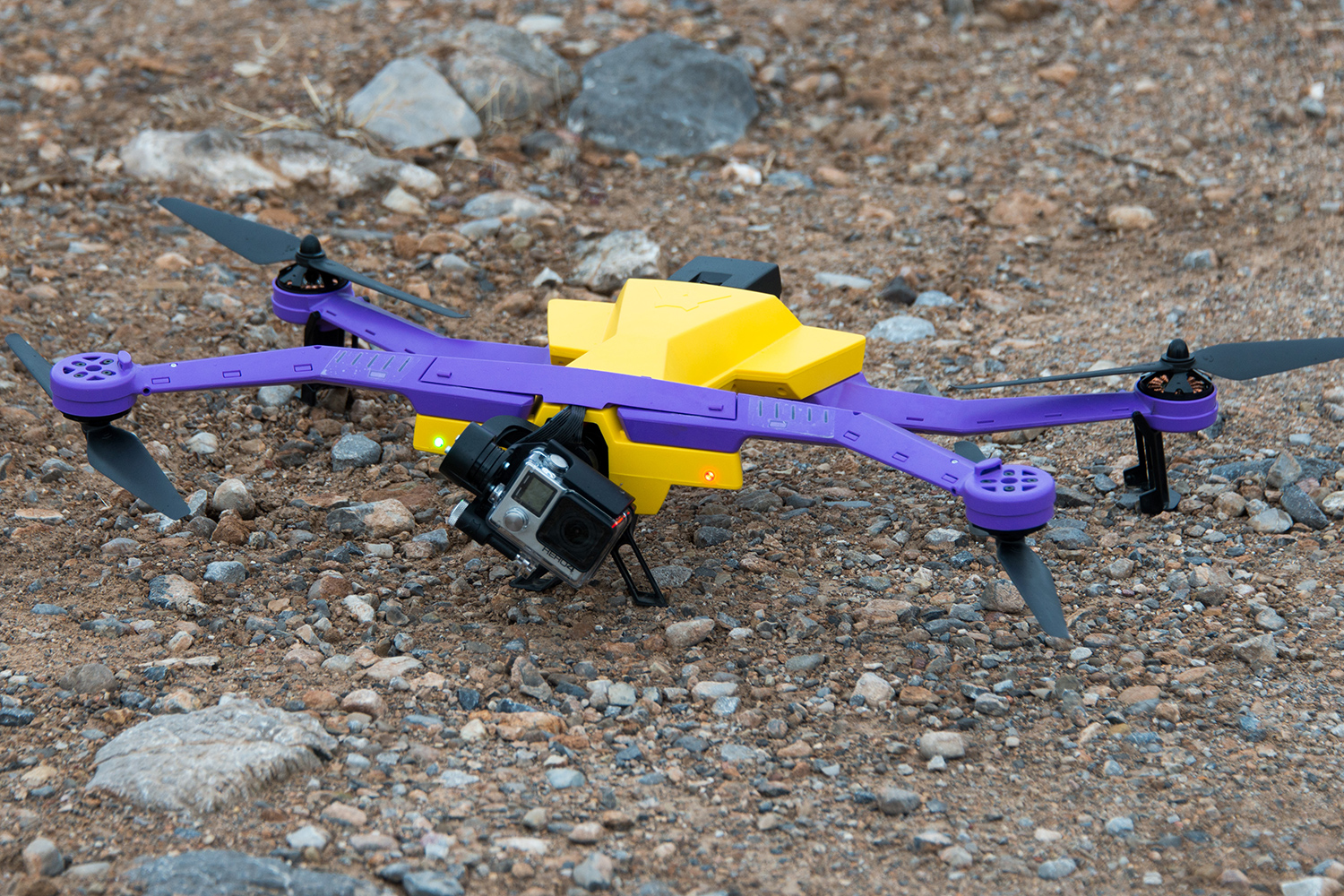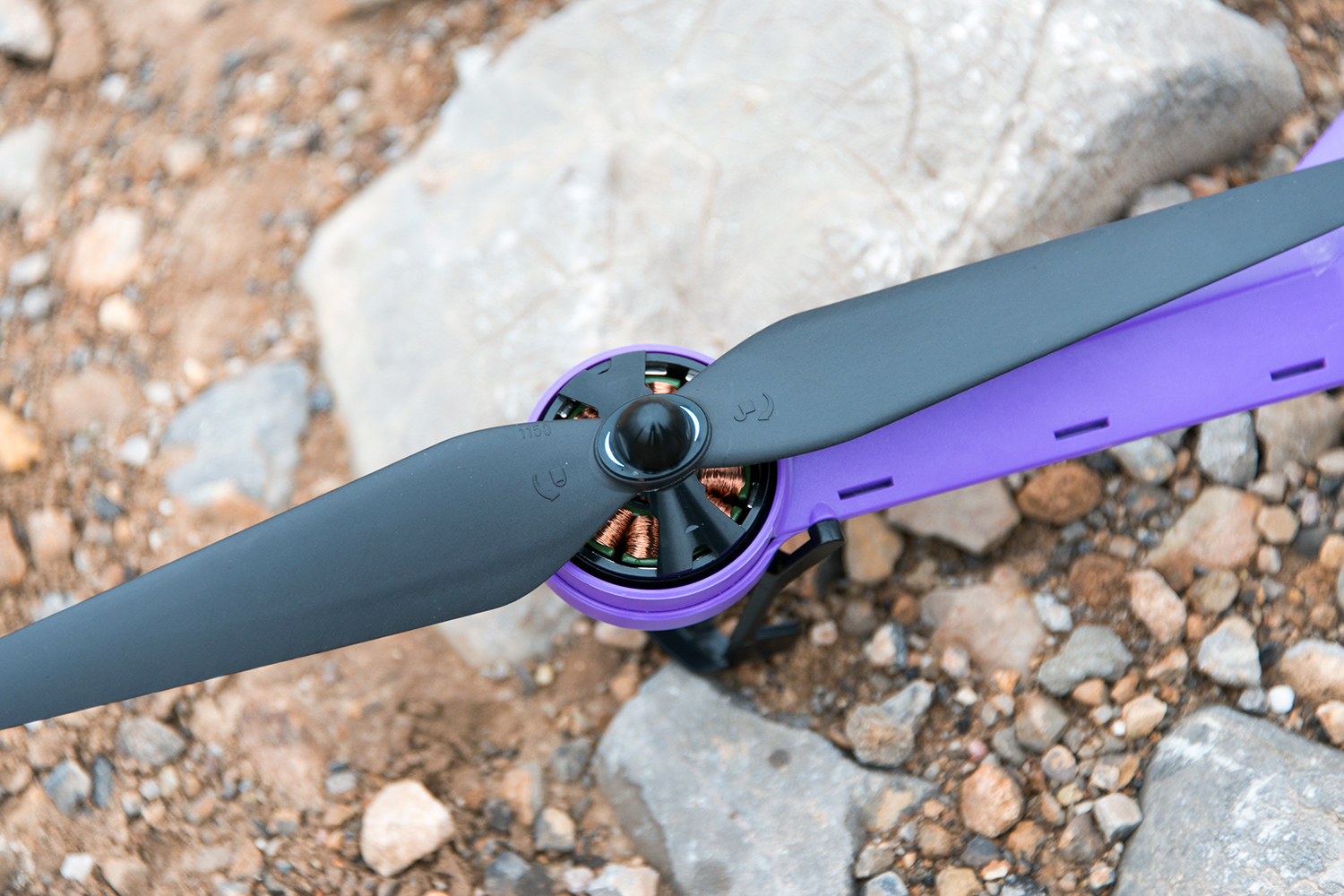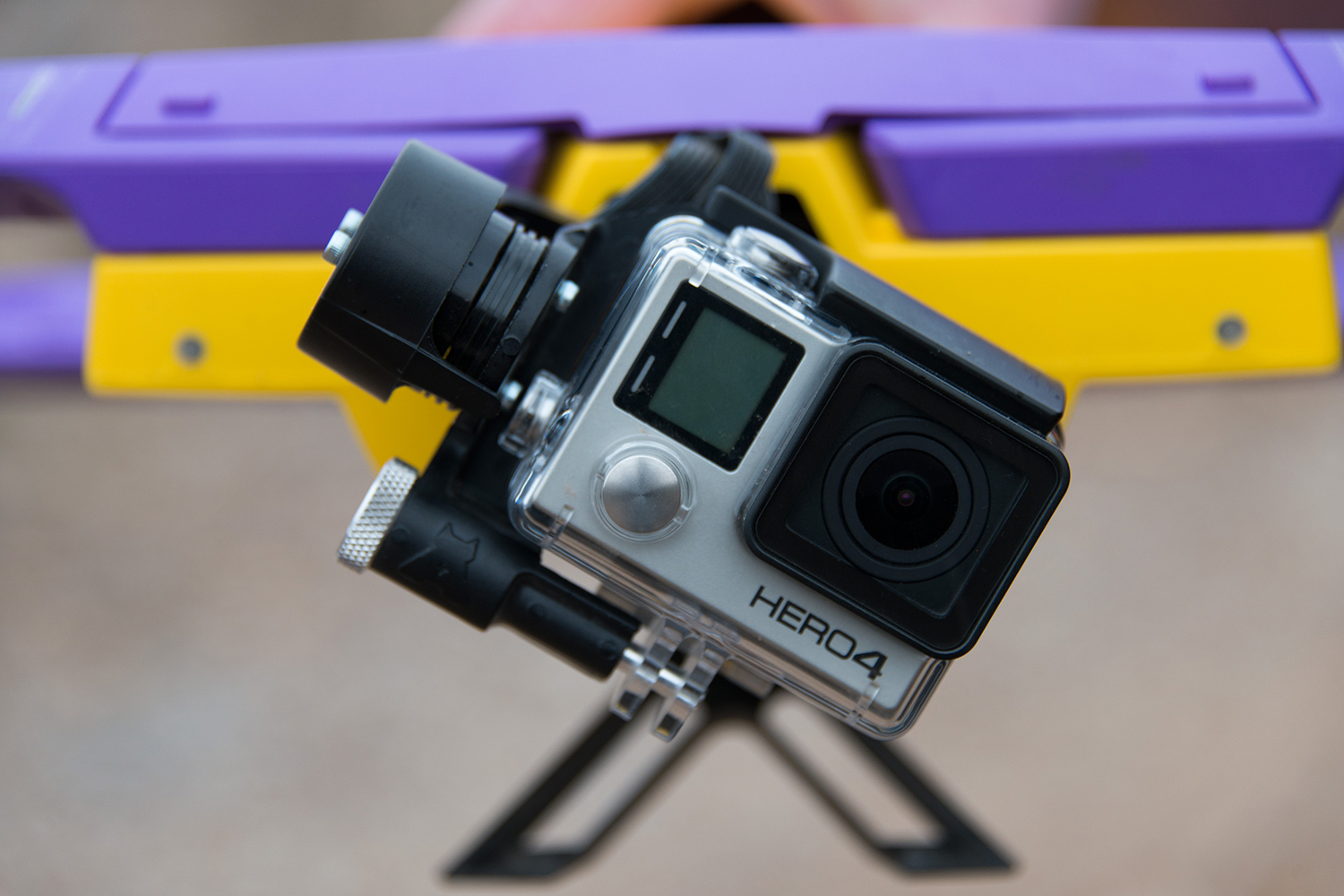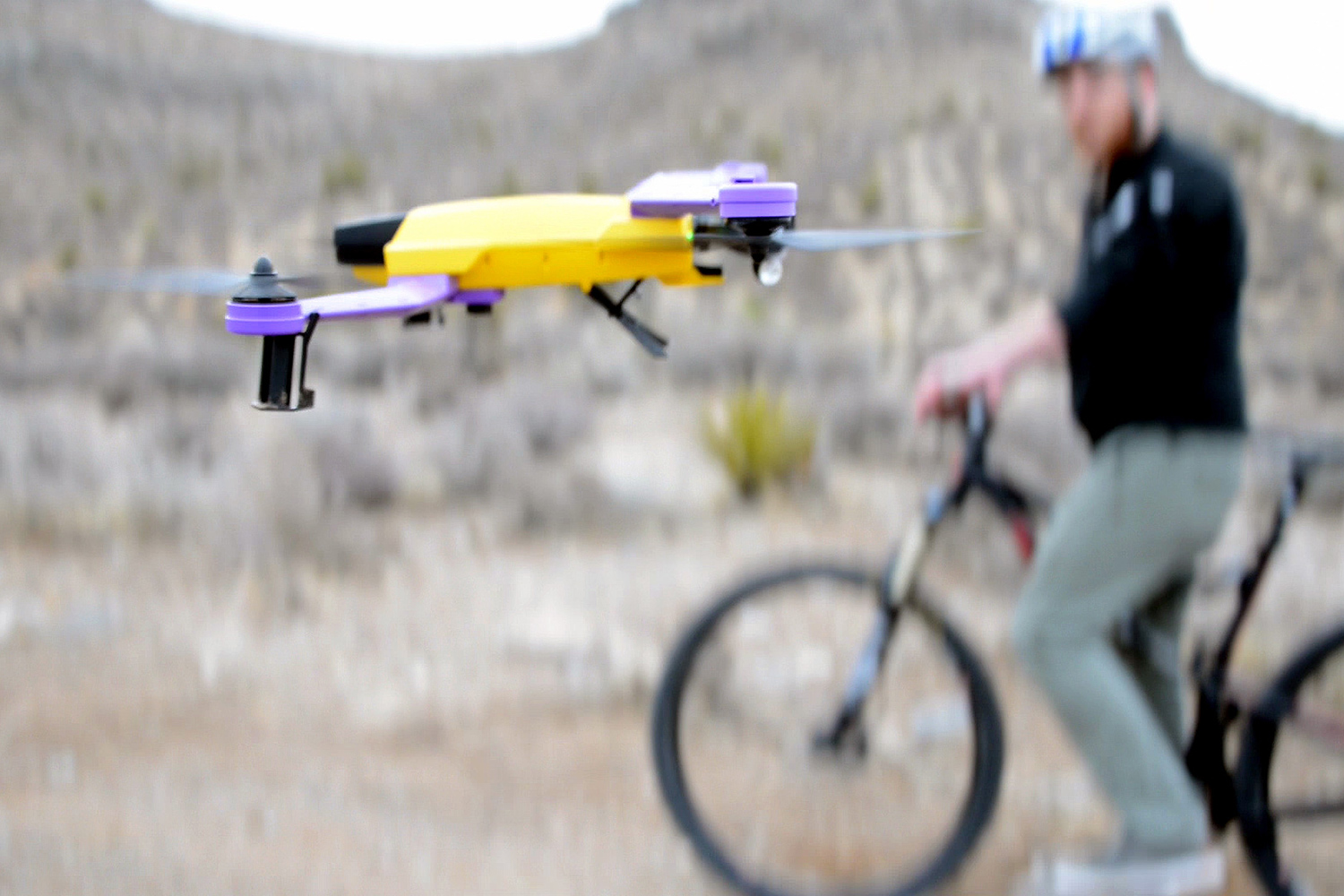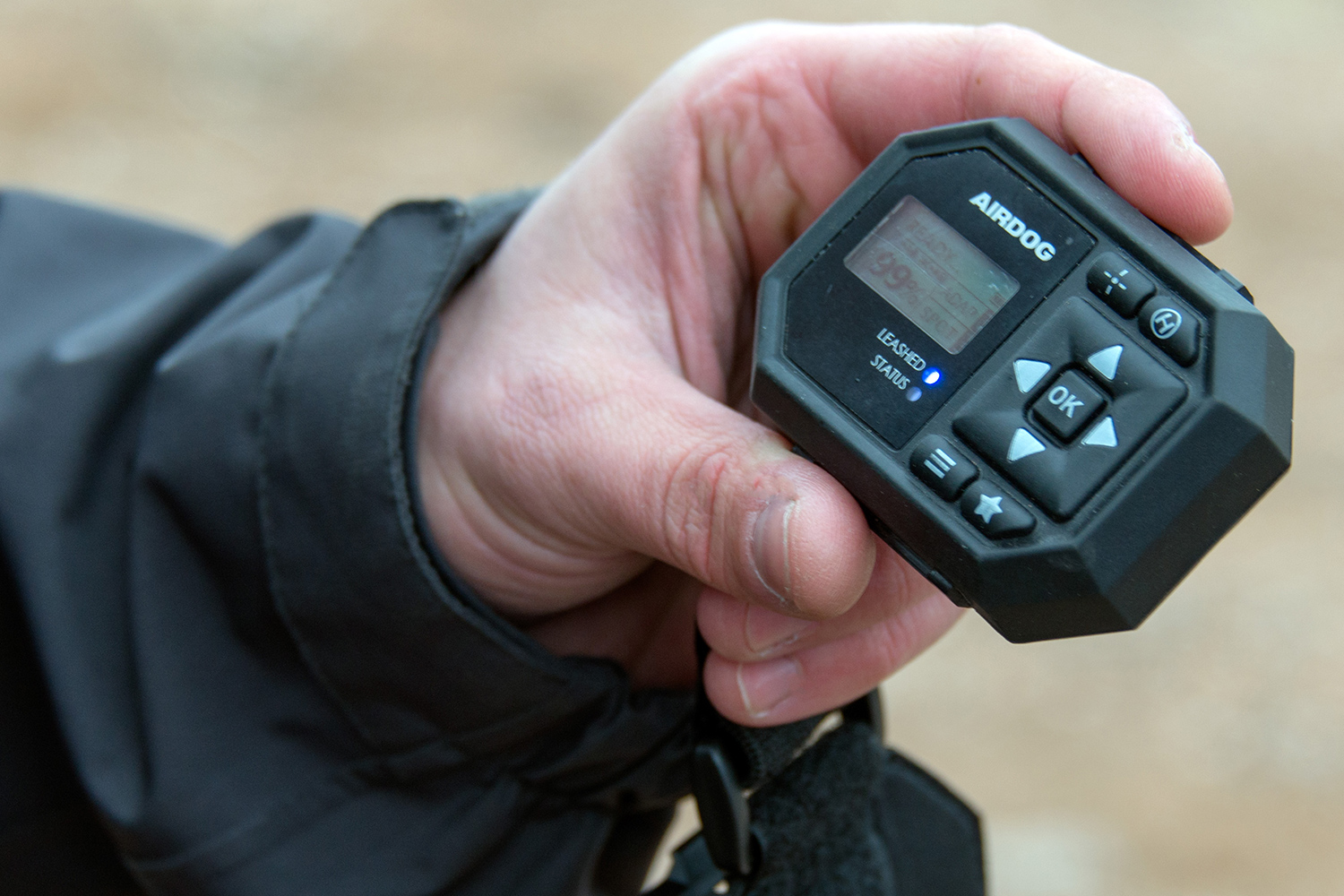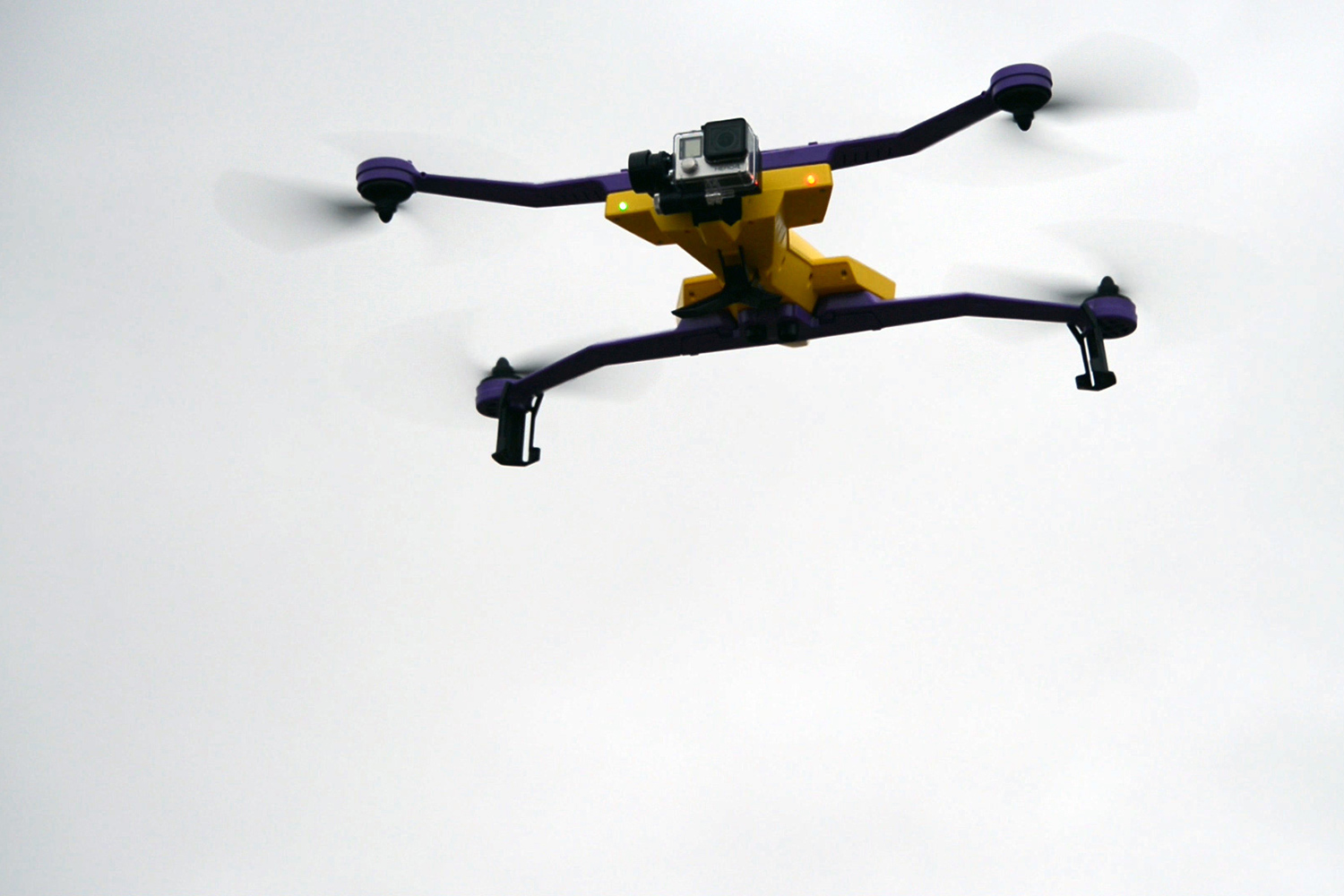This shift has been gradually building up for the past couple years, but it wasn’t until recently that I actually had a chance to experience it firsthand. Yesterday, at a podunk little mountain bike course about 15 minutes outside of Vegas proper, I had a chance to check out one of the first manifestations of the Drone 2.0 era — an auto-follow quadcopter that goes by the name of AirDog.
Now, to be fair, auto-follow drones like AirDog definitely aren’t a new idea. Dozens of different startups have made a killing on Kickstarter and Indiegogo with high-flying promises of drones that autonomously follow their pilots — but the thing is, very few of them have actually delivered on those promises. AirDog is one of the first that’s actually materialized into a living, breathing, fully-autonomous UAV — and to be quite honest, it’s totally amazing. It makes me excited for the near future of drone technology.
You can’t get simpler than this: Two button presses, and the drone takes off. Another, and it moves into filming position — and from that point you’re off to the races. Before I flew it, I received a grand total of about two minutes of instruction on how to use the thing. But despite such a brief tutorial (and the fact that I’m generally a horrible pilot), I was somehow flying AirDog like a seasoned veteran right from the offset.
Once it’s in the air, AirDog will follow you wherever you go — without exception. The craft employs a dizzying array of sensors to not only maintain it’s position in three-dimensional space, but also adapt to changing terrain, and even keep the pilot perfectly in frame the entire time. A symphony of accelerometers, barometers, LiDar, and other sensors work in concert to keep the craft at the optimal distance from its subject (you) — all while keeping clear of the ground and other obstacles. The user is completely and totally free from the burden of control, since the drone and it’s piloting software take care of both flying and filming the entire time.
Pretty soon, you won’t need a controller or any hard-earned piloting skills in order to capture aerial footage of your adventures.
But of course, there’s also a bit of customization thrown into the mix. AirDog isn’t exclusively autonomous. If you want to change the angle, altitude, or shooting mode of the drone, all that stands in your way is a few more button presses. A simple click on the D-pad of the accompanying controller allows you to adjust the AirDog’s position to your needs. Left and right clicks will adjust it by 45 degrees (two clicks will change the position by 90), whereas up and down clicks will alter the altitude. It’s absurdly simple, and it makes capturing pro-looking follow shots easy as pie.
That said, at the end of the day, I honestly can’t say whether AirDog is better or worse than any other auto-follow drone out there right now (take a look at Hexo+ or the 3DR Solo; competition is stiff in this space), but if the competition is anything like this, the future of UAVs is looking incredibly bright. Pretty soon, you won’t need a controller or any hard-earned piloting skills in order to capture aerial footage of your adventures — all you’ll need is the right drone.

